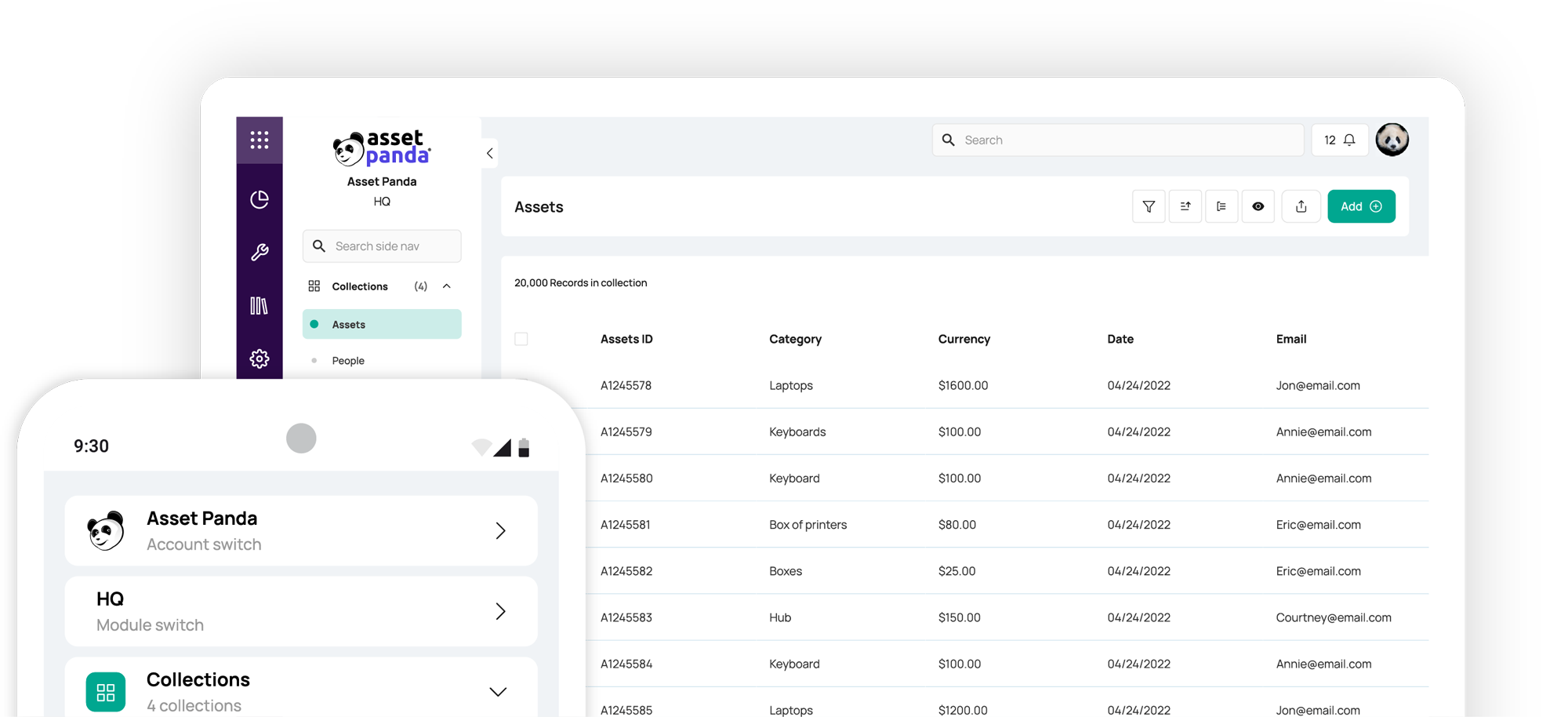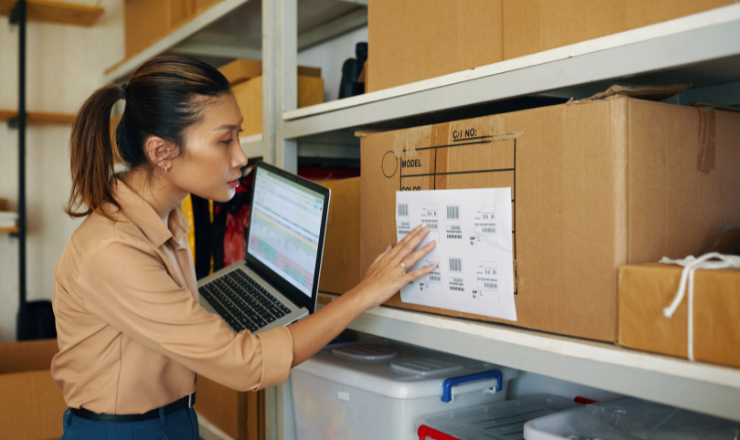What Is Asset Tracking and How Does It Work?
Blog

Table of Contents
Take Control of Your Assets
A personalized demo is just one click away.
From computers and software to furniture and machinery, organizations rely on resources commonly referred to as assets to generate income. The practice of monitoring resources is what is typically called "asset tracking," and it is a critical practice for any business looking to improve management and reduce operational losses.
How Does Tracking Work?
No matter what kind of assets your organization has, the process of tracking them is generally the same across the board.
- First, organizations need to tag their assets.
- Next, organizations manage these tagged assets either in cumbersome spreadsheets or in one central hub using an asset tracking software.
5 Different Tracking Methods for Assets
Organizations regularly acquire, deploy, move, repair, and retire assets as they progress through their lifecycle. As these assets change hands and transfer between locations, it’s important to monitor where each one is physically situated and what state of repair it is in. That’s why tagging physical assets is an important component of your tracking system.
1. Barcodes
Barcodes are a cost-effective way to track assets that require only a label and a scanner. Organizations print out a barcode (UPC, QR, and data matrix are common types) using a label maker, affix it to the asset then scan it with a barcode scanner or smartphone camera to pull up all its relevant data. Since barcodes are inexpensive and multipurpose, they can be used for a range of asset types.
2. Global Positioning System (GPS)
Global Positioning System technology can track assets on an international level using satellites and cellular networks. A primary function of GPS asset trackers is geofencing—the process of creating virtual boundaries so an organization can be made aware when an asset exits an assigned perimeter. GPS asset tracking can be especially useful to organizations that maintain vehicle fleets.
3. Bluetooth Low Energy (BLE)
Bluetooth Low Energy tracking uses bluetooth technology to transmit a regular signal indicating the asset’s location. BLE beacons are best for stationary assets while BLE tags are better for smaller assets on the move, like medical equipment that is used around a hospital. The benefits of BLE tracking include a long battery life and high accuracy, but they are fragile and best for indoor use.
4. Radio Frequency Identification (RFID)
Radio frequency identification tags and smart labels transit data to a scanner via radio waves. That means they can be scanned even out of sight of the scanner, which is why RFID is also used for automatic highway tolls or recording race finish times. Since they don’t need to be seen to be scanned, this makes them ideal for tracking less predictable assets like livestock.
5. Real-Time Location Systems (RTLS)
Also known as a real-time tracking system, this solution uses wireless RTLS tags in a contained indoor space. Tags are affixed to objects or worn by people. When RTLS tags pass by fixed reference points located in the space, they transmit a signal to indicate their real-time location. RTLS is most often used in factories and warehouses.
Manual Spreadsheets vs Software
Although there are many ways to tag assets for asset tracking, all of them have the same endpoint. Organizations need to scan these tagged assets and then monitor them from a central hub. Some organizations still use handwritten ledgers or spreadsheets, but the most modern and convenient solution is to collect data in asset tracking software designed for this purpose.
Now, you may be wondering, what are asset tracking capabilities to look for in the right platform? Generally, when you are looking for an asset tracking software for your organization, you’ll want to search for a solution that offers the following features at minimum:
Real-time Tracking
The software should allow organizations to monitor the status, location, and condition of their assets in real time. Your asset tracking software should be able to show you exactly where you can find an asset and what level of repair it is in—in one click.
Full Lifecycle Management
Capable asset tracking software should follow an asset through every step of its lifecycle. Upon acquisition, the software should store a receipt of the asset’s initial cost. After disposal, the software should maintain a record of how long the asset was in service and when it was retired.
Scanner Integration
Asset tracking software should be able to generate unique identifiers for assets, whether in the form of barcodes, BLE beacons, or GPS tags. Ideally, the software should be able to generate multiple identifiers at the same time to make it easier to efficiently tag a fleet of similar assets.
Smart Phone Compatibility
Your asset tracking platform should be as mobile as your assets are. It should be accessible through a mobile app so you can access information on the go. A mobile asset management app is particularly convenient if it allows you to scan asset tags directly through the phone’s camera, sparing the cost of third-party scanners.
Automatic Reporting
You should be able to use asset tracking software to easily generate and share accurate reports on your assets. The software should also give you the capability of customizing the report to share the data that is most relevant to your organization.
Customized Alerts
Running low on certain assets? Is a critical asset inaccessible due to repairs? If you’re using asset tracking software, these events should never be a surprise. The software should also let you assign alerts to specific users or custom groups that work with those assets the most.
A Team Player
There’s no doubt that asset tracking software is only one of the software solutions that your organization requires. Make sure that the solution you choose can seamlessly integrate with other types of software that are part of your organization’s digital landscape.
Tracking Assets with Asset Panda
Why is asset tracking so critical to your organization’s bottom line? No matter the size of your company or the unique assets you rely on, asset tracking is essential for maintaining continuous business operations and maximizing cost savings. In all cases, it is a two-pronged strategy that requires organizations to make two choices: which type of tag to use and which software solution to record and analyze their asset data.
However, what if you could avoid decision fatigue by combining those two choices into one? With Asset Panda, you can immediately access a two-part solution for both tagging and tracking your assets. Asset Panda’s highly customizable software not only can generate and print barcodes; it also contains all of the software features listed above that are essential for any asset management system.
With Asset Panda’s customized solution, you can quickly generate custom barcode tags for your organization’s specific assets, then track their vital data that is most important to your bottom line. Find out how Asset Panda can work for you when you request your unique demo today.
Take Control of Your Assets
A personalized demo is just one click away.
Related News & Press
Learn more from a solution specialist
Schedule a demo to find out how you can transform your workflows with Asset Panda Pro
Contact our team at (888) 928-6112



